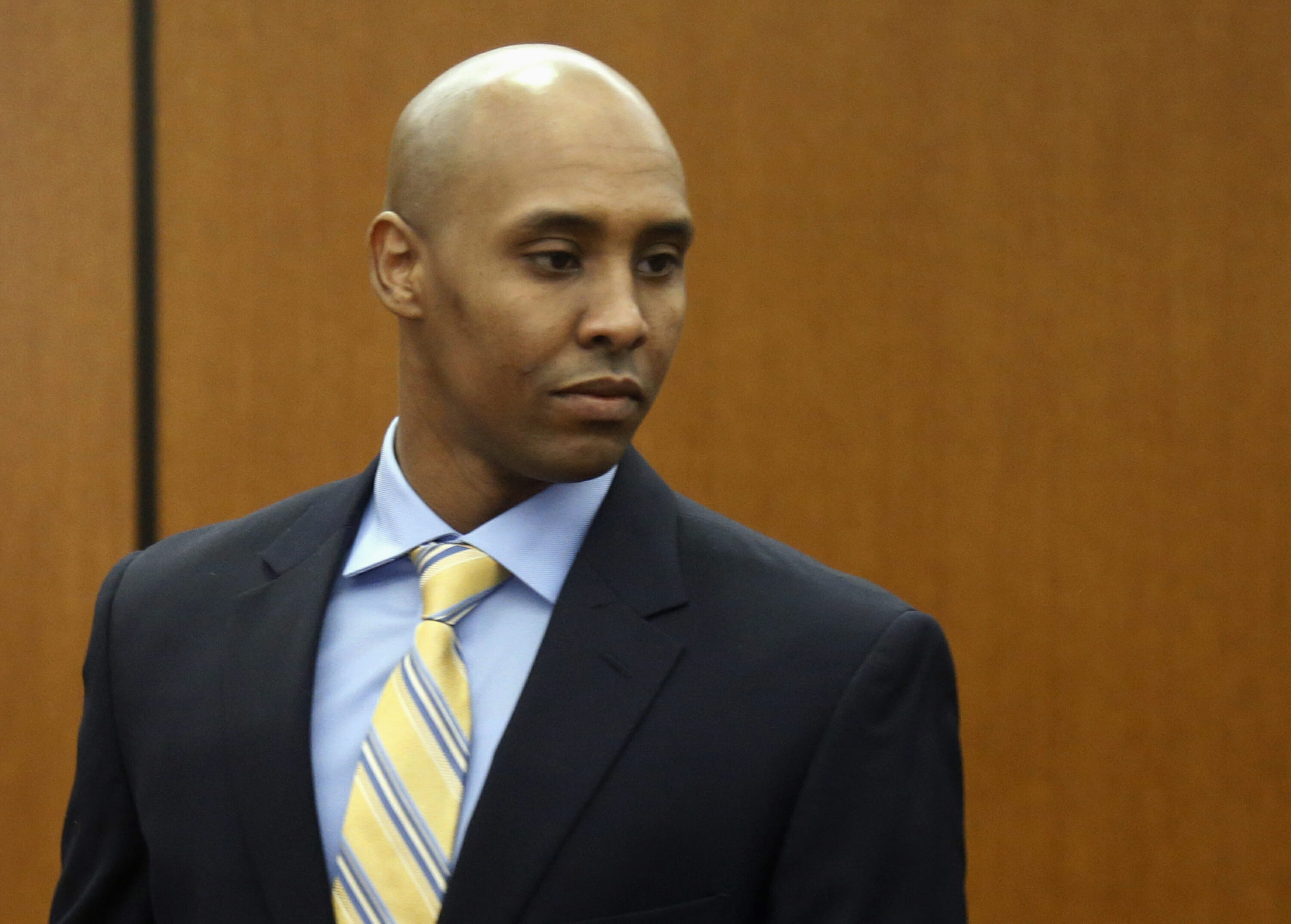
Attorneys argue over evidence for ex-Minneapolis cop's trial
MINNEAPOLIS (AP) — Prosecutors can’t use a former Minneapolis police officer’s silence or the results of a pre-hire psychological exam as they present their case in the 2017 shooting death of an unarmed Australian woman, a judge ruled Friday.
But Hennepin County Judge Kathryn Quaintance left the door open for those issues to be raised if Mohamed Noor takes the stand.
Noor, 33, goes on trial April 1 on murder and manslaughter charges in the death of Justine Ruszczyk Damond, a 40-year-old life coach with dual U.S.-Australian citizenship who had called 911 to report a possible sexual assault behind her home. Noor, who shot Damond when she approached his cruiser, was fired from the police force after being charged.
Noor refused to talk to investigators when he was offered a chance to do a voluntary interview, and prosecutors wanted to use that as evidence. They argued in court documents that Noor wasn’t compelled to talk to police, so there’s no self-incrimination issue.
Quaintance disagreed, saying: “It seems to me the right not to incriminate oneself is a pretty seminal constitutional right.”
Quaintance ruled that prosecutors could not use Noor’s silence as part of their “case in chief,” but said it may be used to attack his testimony if he takes the stand.
In a similar ruling, Quaintance also rejected prosecutors’ bid to use a 2015 psychological test of Noor before his hiring as a Minneapolis officer.
The test found Noor was disinterested in interacting with others and, when compared with other officers, was more likely to be impatient or have difficulty confronting people. A psychiatrist concluded that overall, Noor was fit to be a police officer, saying the test results don’t carry much weight.
Prosecutors had argued the test results matter because the jury has to decide whether Noor acted as a reasonable police officer would act. The defense called the test “unsupported speculation.”
As with Noor’s silence, Quaintance said prosecutors can’t make the exam a central part of their case, but she might allow it if Noor testifies, depending on what he says.
Marsh Halberg, a Minneapolis defense attorney who is not connected to the case, said those rulings raise the stakes for Noor if he chooses to testify.
Halberg said tactically, it makes sense to have Noor remain silent until trial and have him tell his story to everyone for the first time in front of jury. But if these other issues can come up during his testimony, he has to be prepared for that.
Noor’s attorneys have not said whether he will testify at trial.
Quaintance ruled on several other requests Friday. Among them, she said prosecutors can’t point to prior “bad acts” that happened when he was an officer, including one incident in which prosecutors say he pointed a gun at a motorist’s head two months before Damond’s shooting.
However, she said, prosecutors can introduce evidence about a 911 call that Noor and his partner responded to less than two hours before Damond’s shooting. In that case, police were called to the same neighborhood about an elderly woman who seemed to be lost or confused.
Quaintance said that evidence is relevant to what Noor knew and to his state-of-mind on the night of the shooting.
Quaintance also denied a defense request to show potential jurors a video about unconscious bias. Defense attorney Peter Wold said the video would help ensure that Noor has as fair of a trial as possible. Quaintance said issues about bias would be addressed in a lengthy juror questionnaire, but she would not allow the video to be played.
Halberg said the selection of a jury is going to be extremely important, and attorneys will have to look at potential biases jurors might have for or against police officers and minorities.
Noor, who is Somali-American, also entered a not-guilty plea Friday to second-degree intentional murder, third-degree murder and second-degree manslaughter charges.
Noor’s partner the night of the shooting, Matthew Harrity, told investigators he was startled by a loud noise right before Damond approached the driver’s-side window of their police SUV.
According to the criminal complaint, Harrity, who was driving, heard a voice and a thump and caught a glimpse of a person’s head and shoulders outside his window. He then heard a sound like a lightbulb breaking, saw a flash and looked to his right to see Noor in the passenger seat with his arm extended. He looked out his window and saw Damond with a gunshot wound.
___
Follow Amy Forliti on Twitter: http://www.twitter.com/amyforliti
The Western Journal has not reviewed this Associated Press story prior to publication. Therefore, it may contain editorial bias or may in some other way not meet our normal editorial standards. It is provided to our readers as a service from The Western Journal.
Truth and Accuracy
We are committed to truth and accuracy in all of our journalism. Read our editorial standards.
Advertise with The Western Journal and reach millions of highly engaged readers, while supporting our work. Advertise Today.












